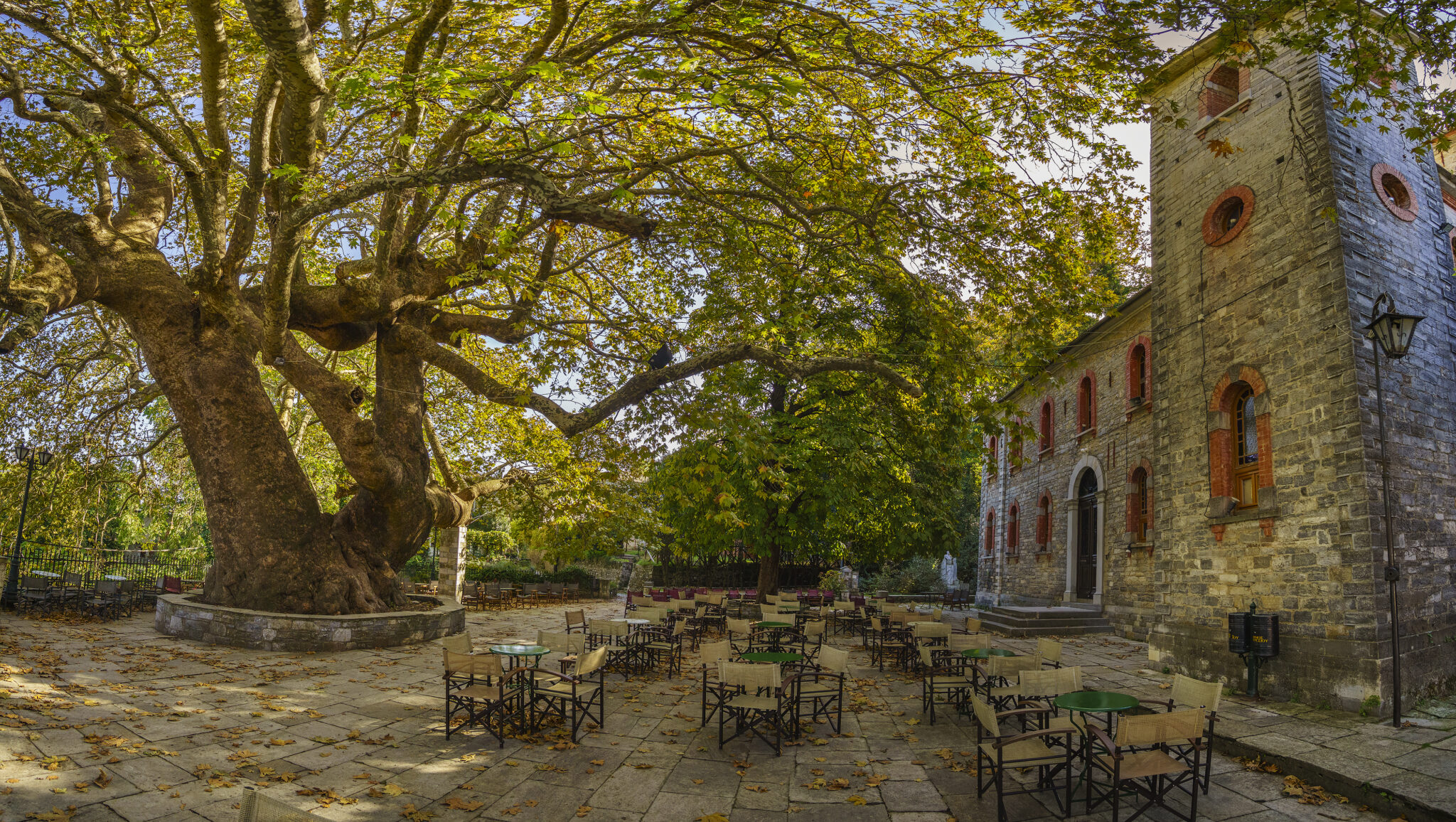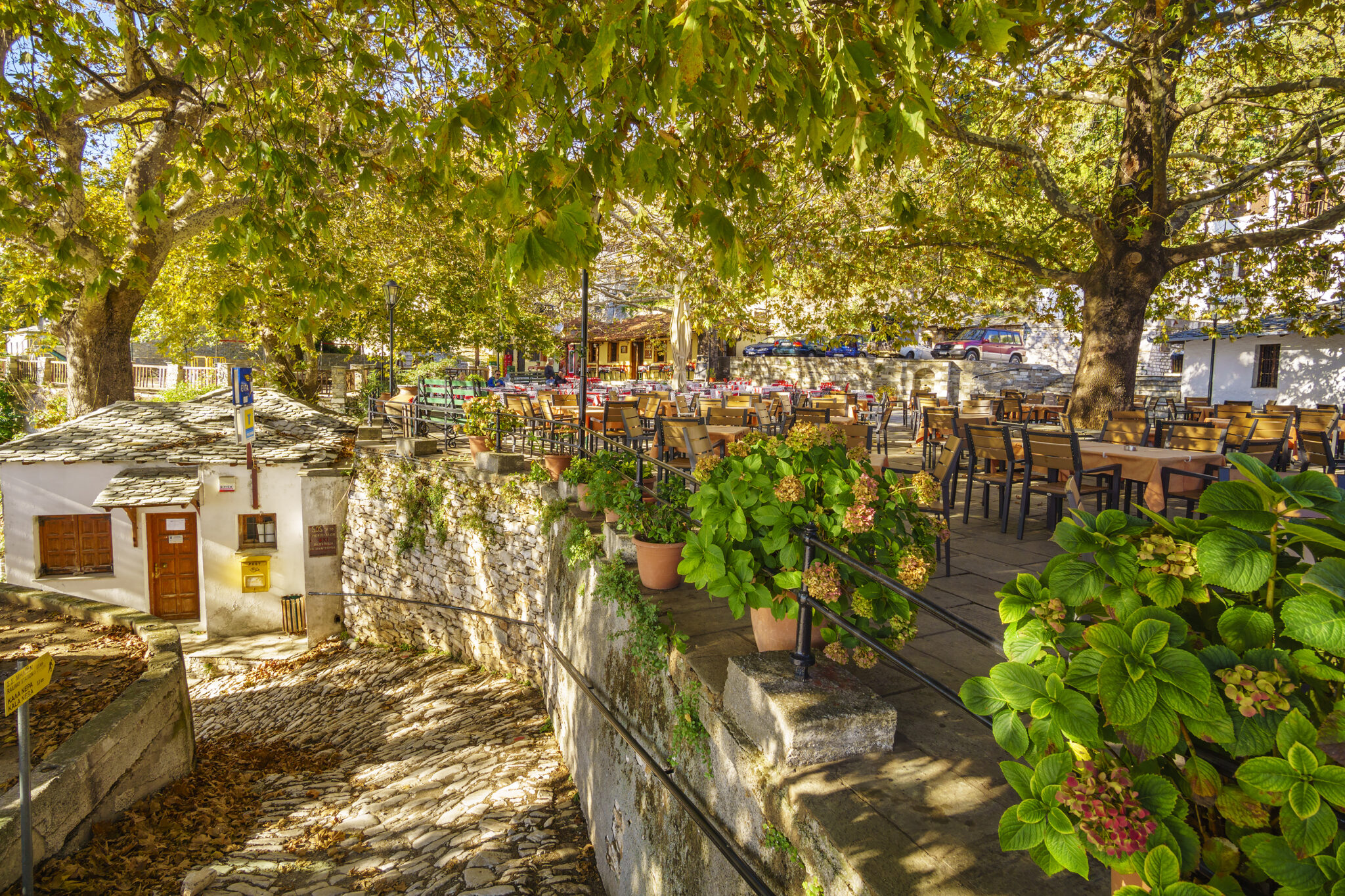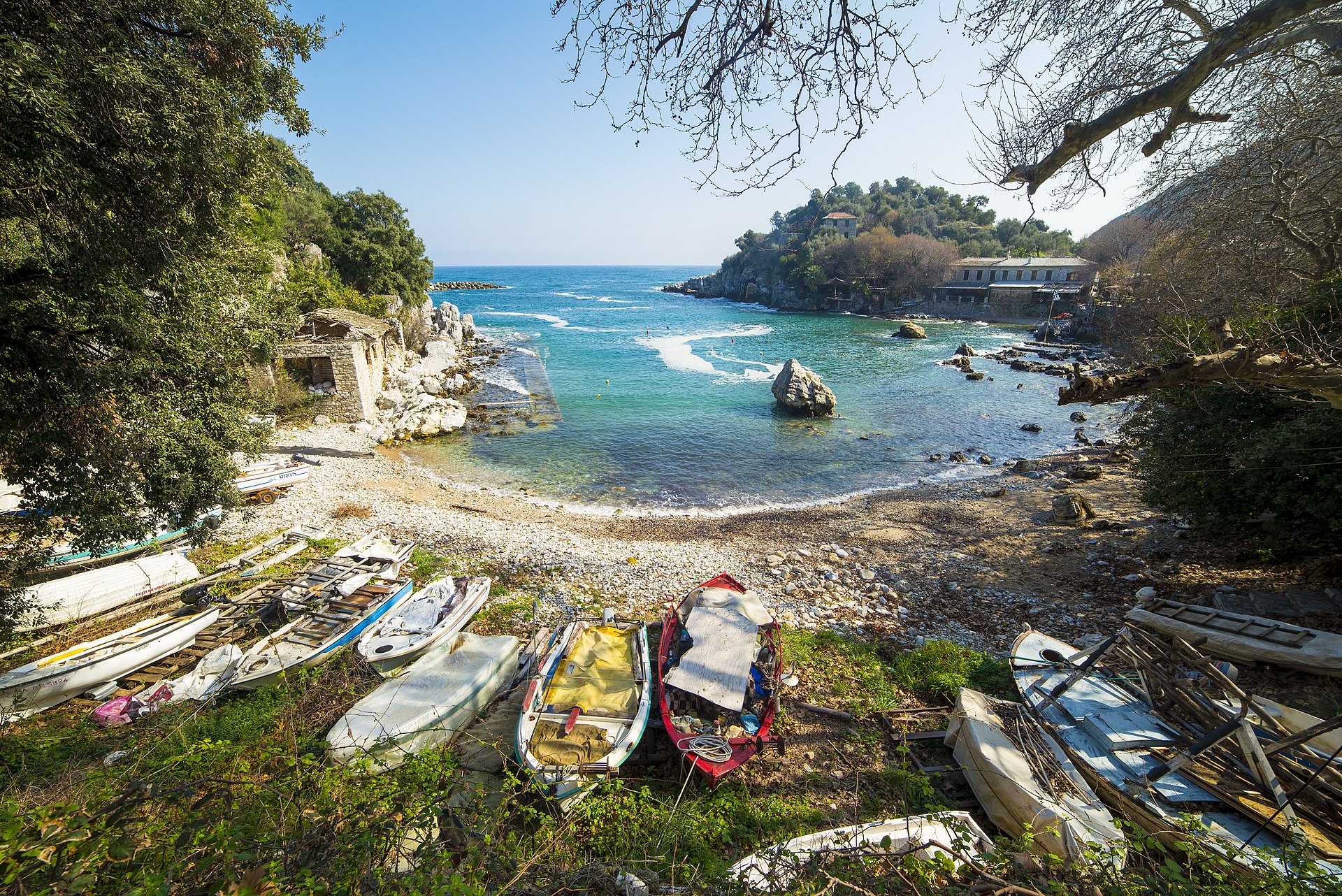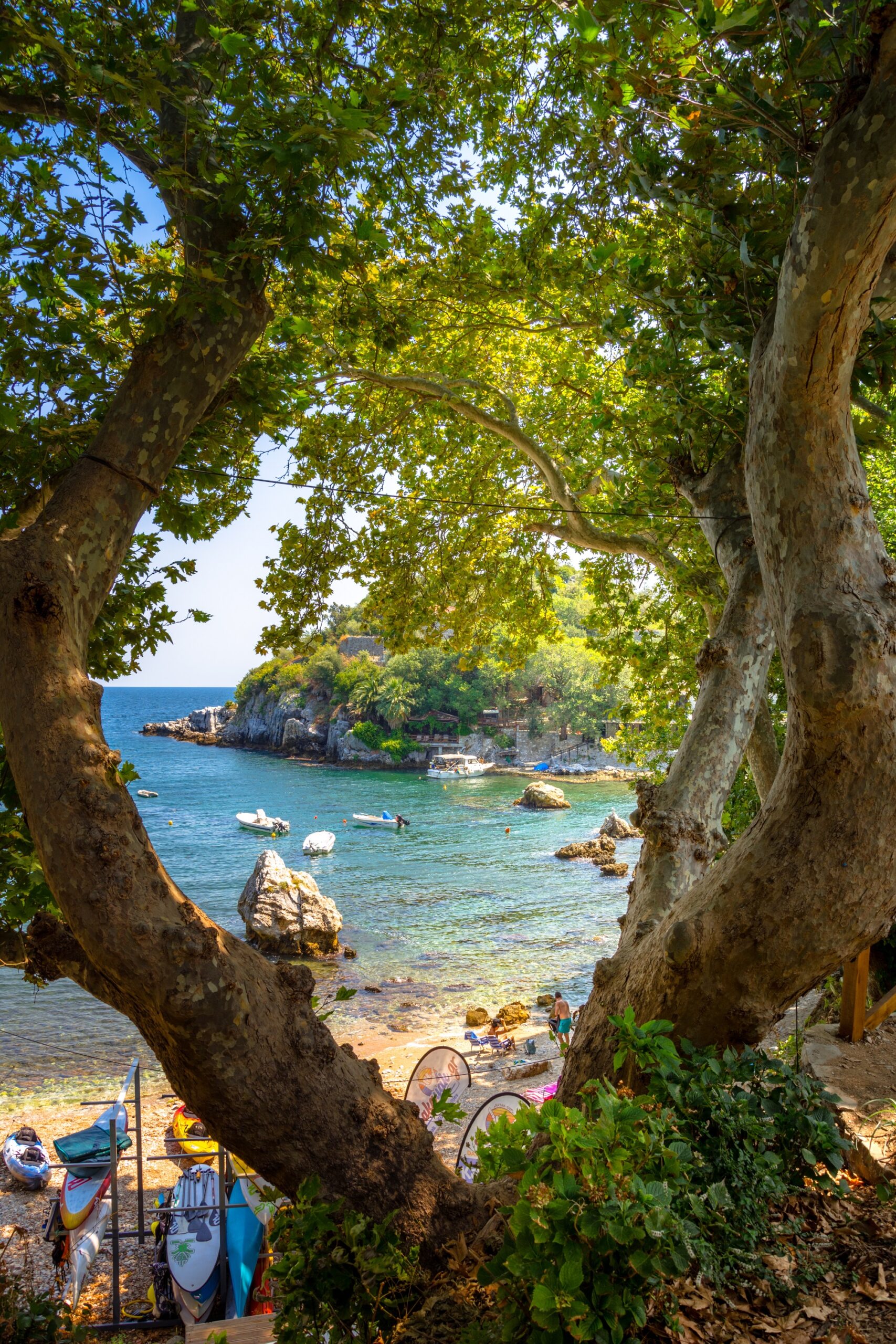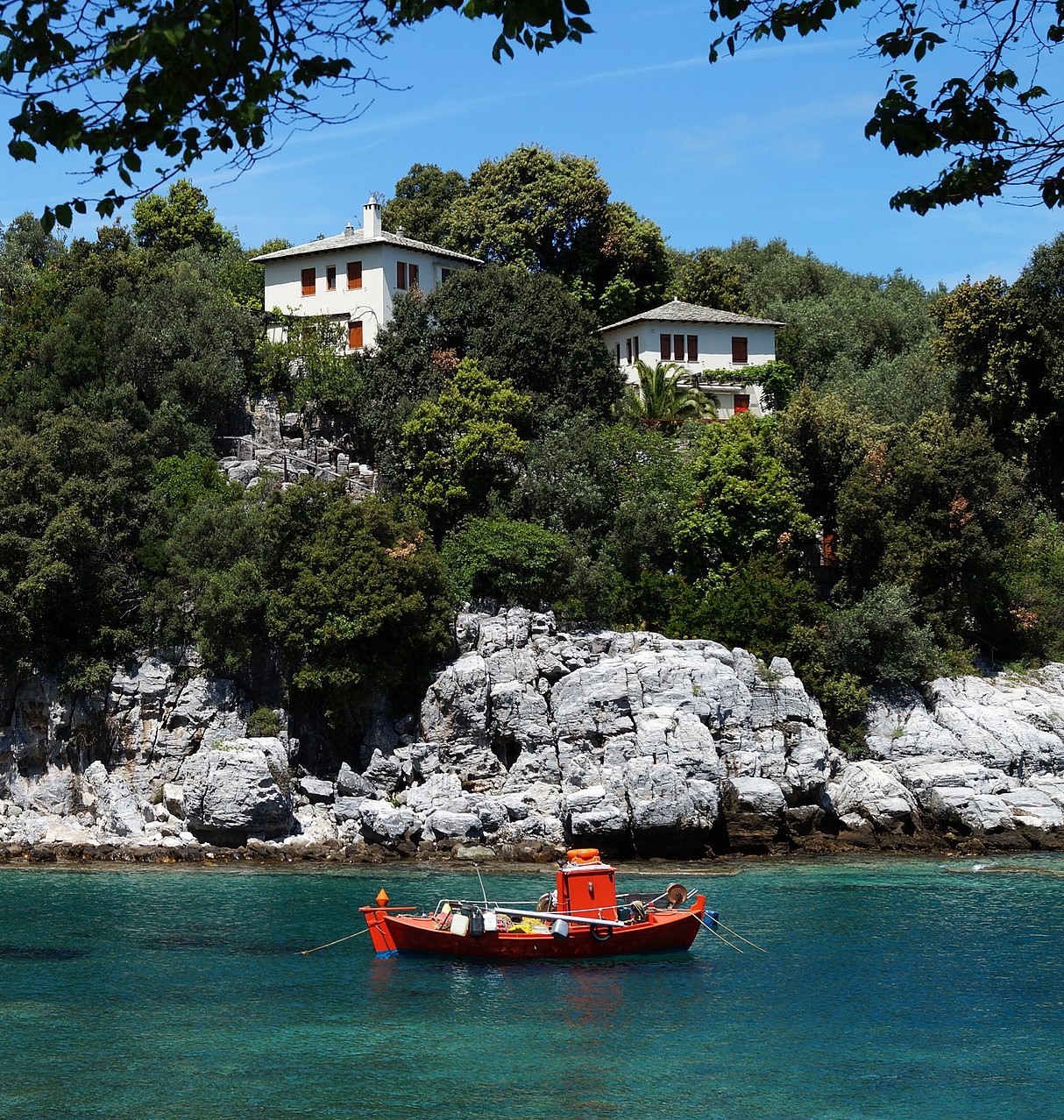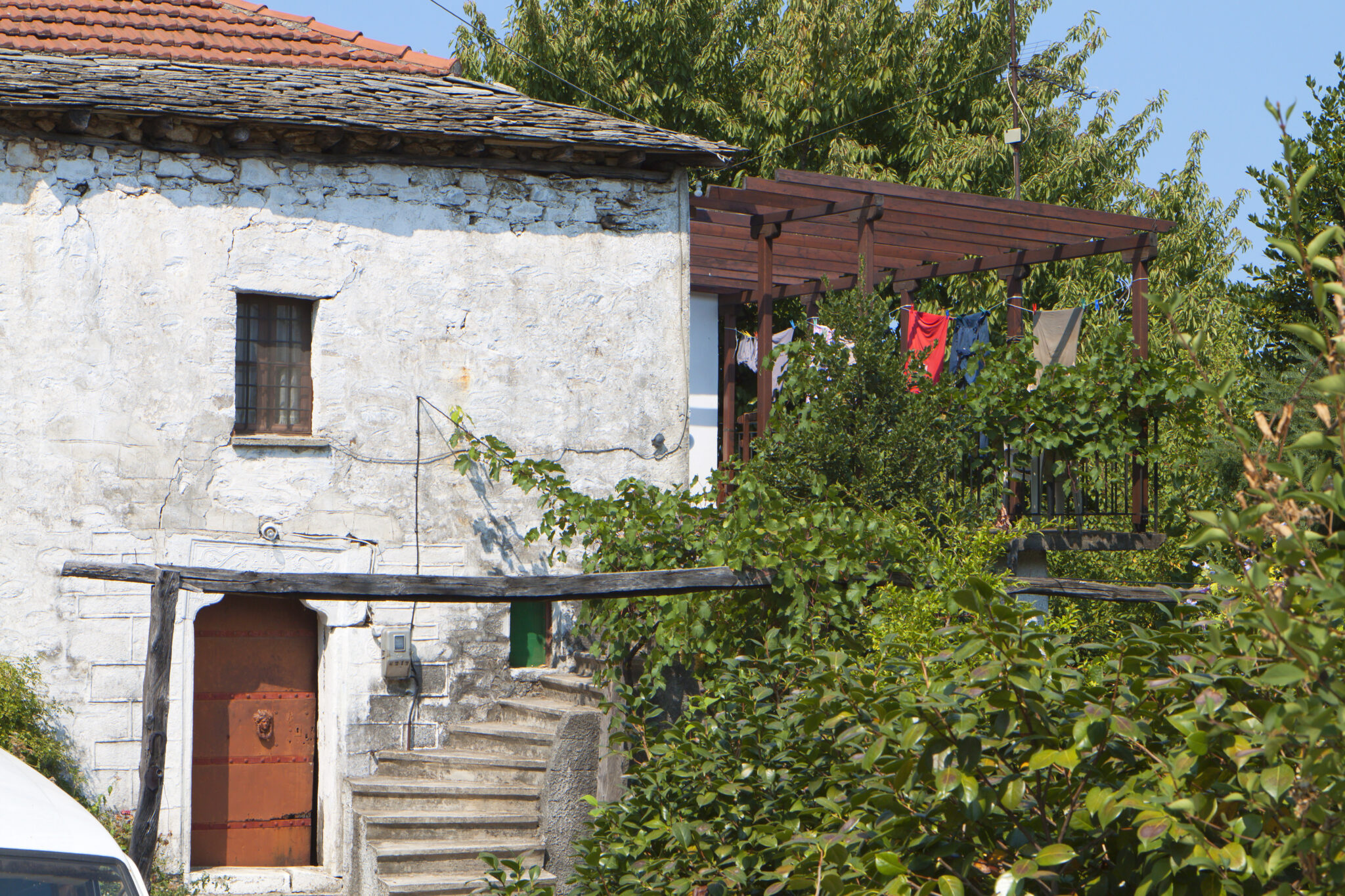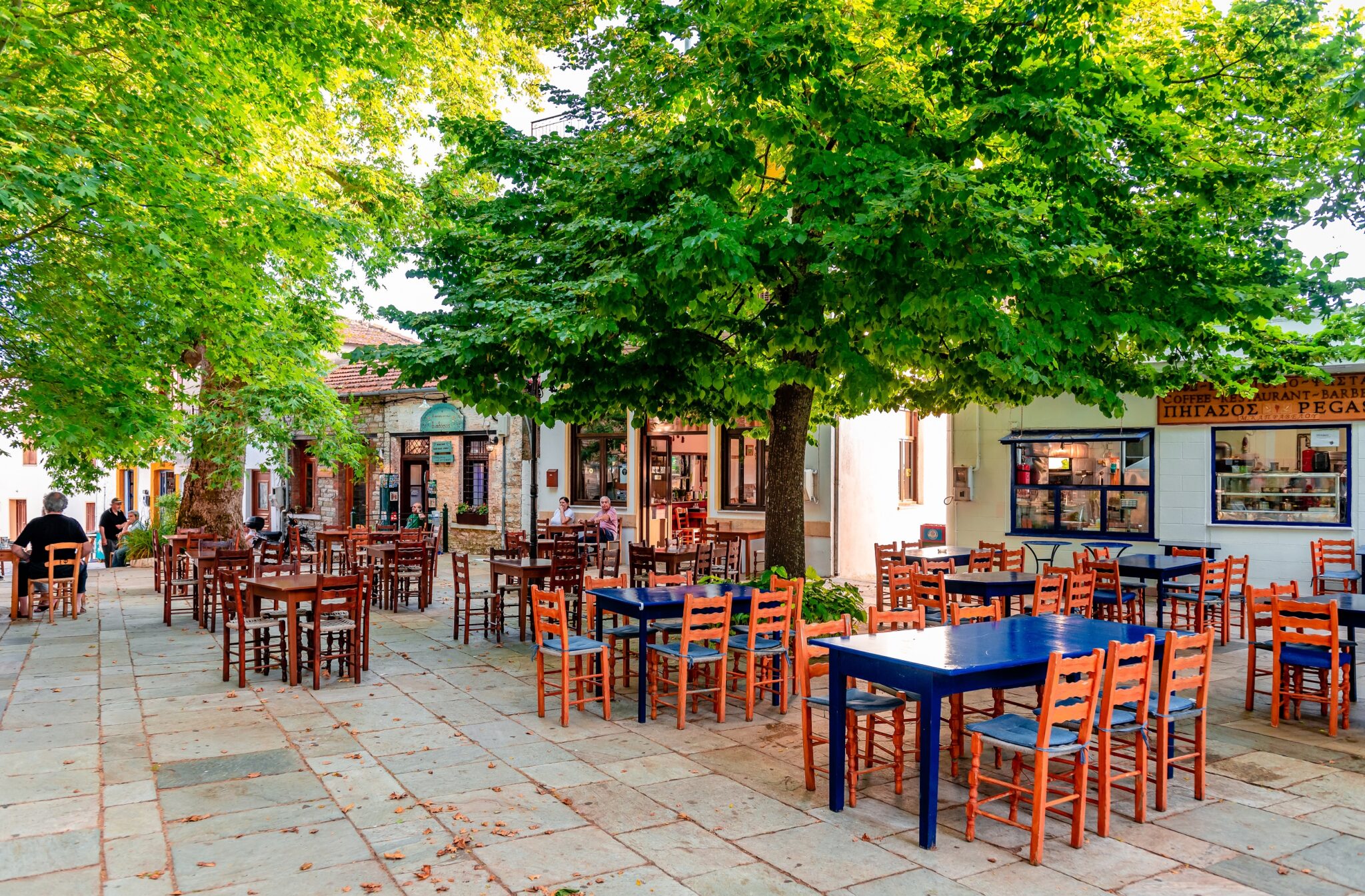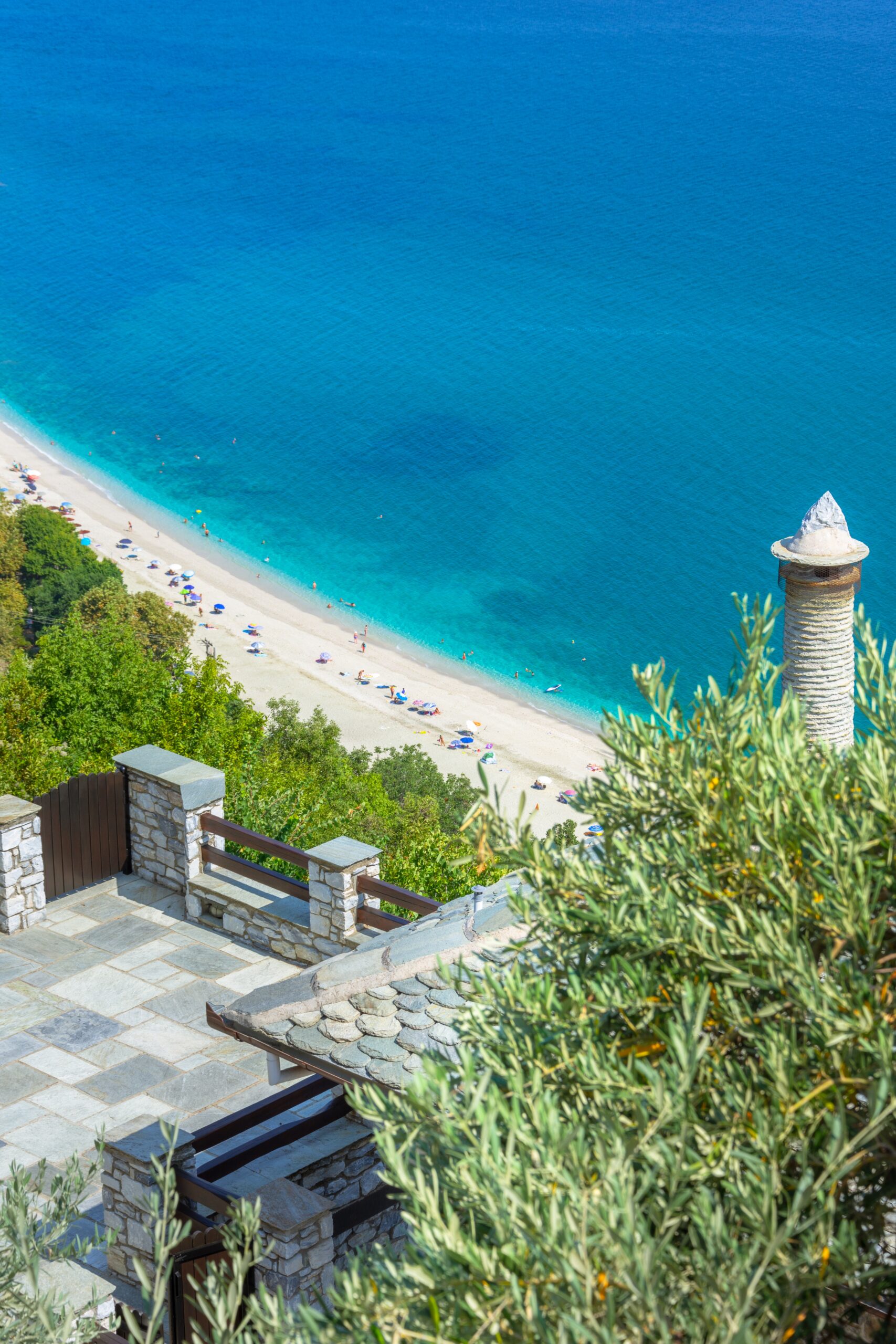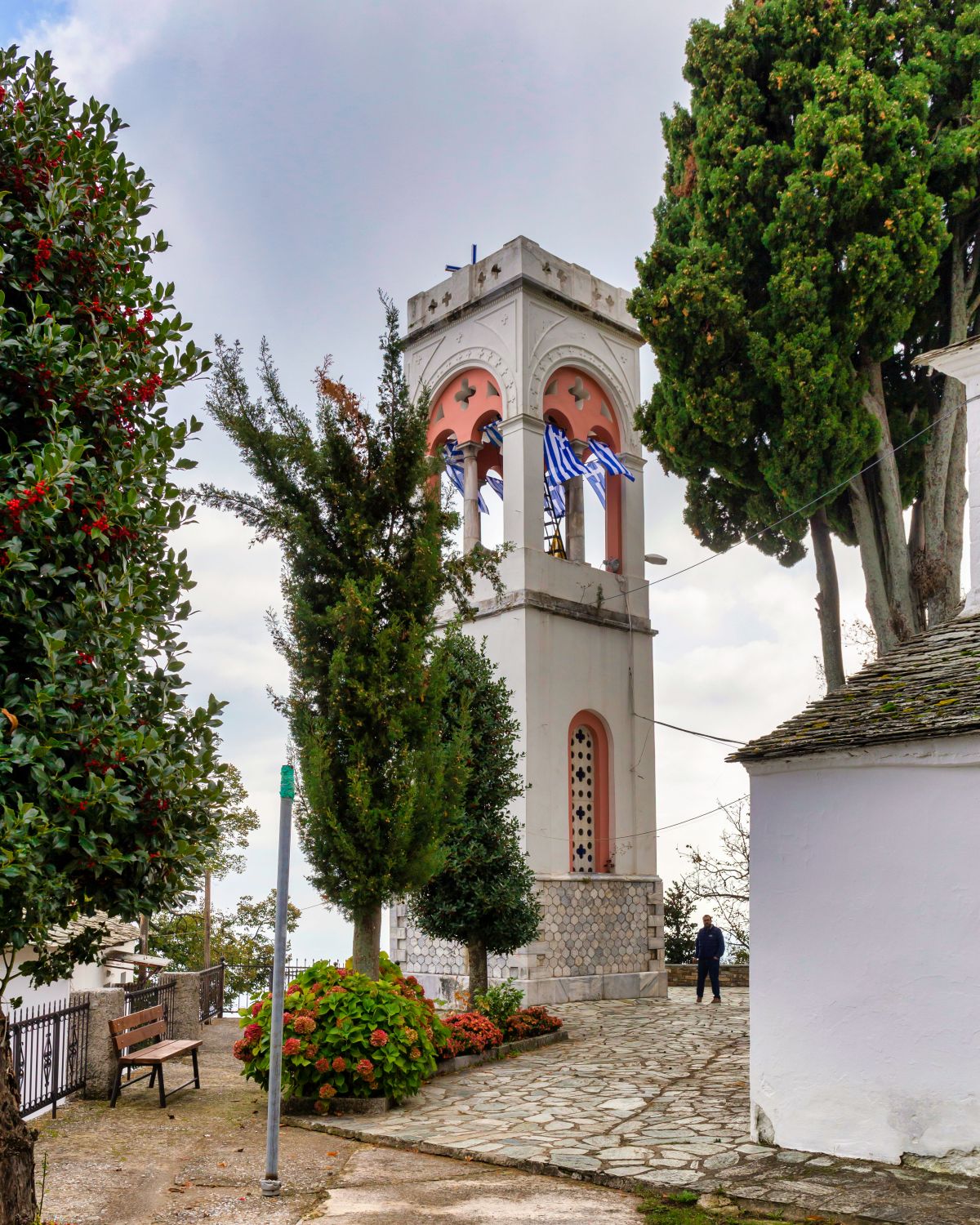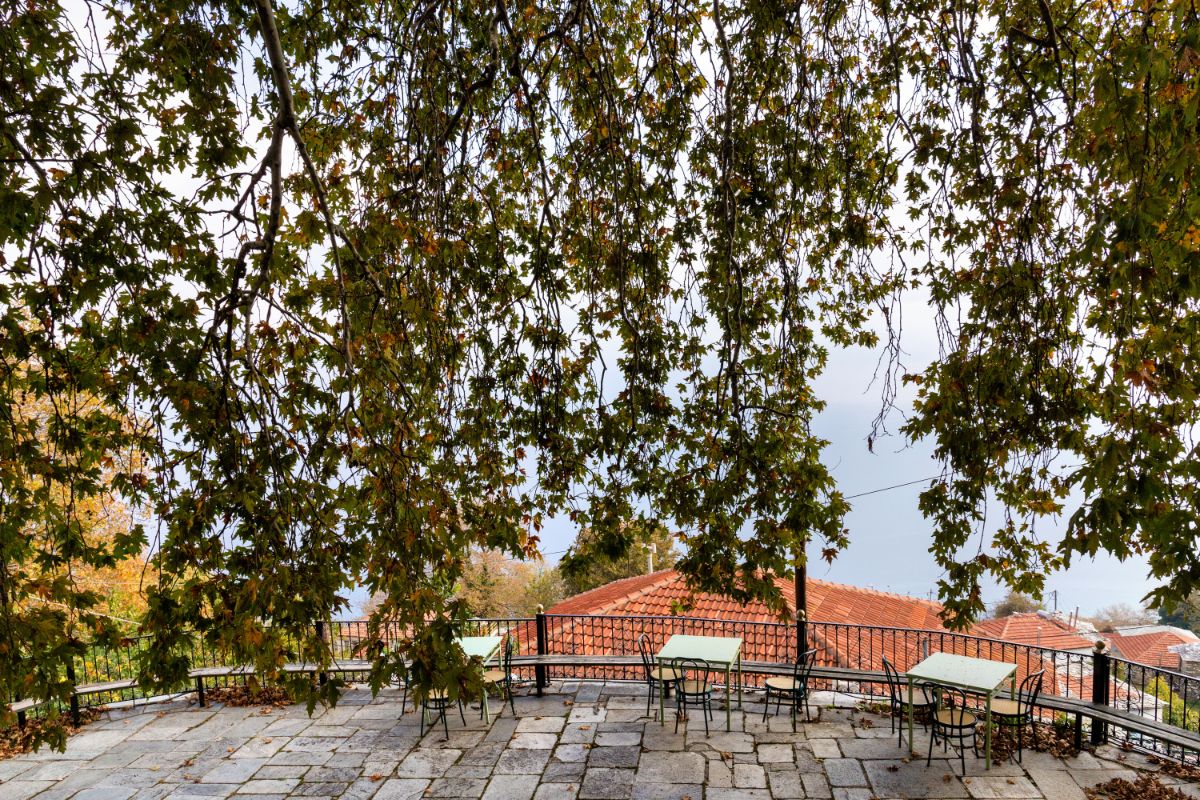Pelion, Greece, a mythical mountain draped in enchanting beauty, is home to a mosaic of picturesque villages, each narrating a tale steeped in history and drenched in nature’s splendour. Tsagarada, the crown jewel, beckons with its four distinct neighbourhoods, their charm rooted in architectural grandeur, lively squares, and centenarian plane trees.
Damouchari, with its cinematic connection and fascinating past, breathes an irresistible allure. Mouresi unfurls panoramic vistas of the Aegean Sea while Lafkos, peaceful and secluded, captivates with its artful ethos and serene vistas. Meanwhile, the lively Agios Ioannis buzzes with vibrant summer energy. Lastly, the remote Pouri tempts visitors with its cascading square levels, a waterfall of rustic charm. With pristine beaches, lush landscapes, and fascinating history, Pelion’s villages offer a picturesque journey through Greece’s lesser-known side.
Tsagarada
Tsagarada is made up of four neighbourhoods: Agios Stefanos, Agia Kyriaki, Agia Paraskevi, and Taxiarches. Though they are quite far from one another, making it difficult to consider Tsagarada a village in the traditional sense, there’s a reason for this singular layout. The settlement began being formed in the 16th century, when people from the coastal area of Karavostasi moved there to protect themselves from pirates and, later, from the Ottomans, building homes that were sheltered within the thick forests.
In the 18th century, the residents developed an industry centred around silk and shipbuilding, but by the mid-19th century, many had emigrated, primarily to Egypt. As was common for the time, some of the wealthy Egyptian expatriates made generous contributions to their birthplace. This is why Tsangarada boasts some impressive architectural examples, roads, water supply systems, stone fountains, and troughs for animal watering and clothes washing.
For many years, Tsagarada has been the most popular and tourist-oriented destination in Central Pelion, with dozens of hotels, traditional guesthouses, villas, restaurants, and cafes, many of which are situated along the main road or within close proximity. The village’s development has been majorly influenced by its proximity to some of Pelion’s most beautiful beaches, located on the Aegean side, such as Milopotamos, Papa Nero, Ai Giannis, and Fakistra.
Agia Paraskevi is the heart of Tsagarada. Dominating the picturesque and spacious square is a magnificent plane tree with a trunk circumference of 14 meters, which local legend claims is over 1,000 years old. Standing beside it, the Church of Agia Paraskevi combines traditional Pelion architecture with neoclassical elements. On the lower side of the square, you can quench your thirst at the sheltered stone fountains before stopping for a coffee or meal. Following the cobbled path that begins next to the Lost Unicorn hotel, you will reach two of Tsagarada’s most impressive architectural landmarks: the Nanopouleio and, further along, the Achillopouleio School. Both are exceptionally well-preserved. In the small square of Taxiarchis, the monumental church from 1786 dominates the area. If it is open, it’s worth entering to admire the intricately carved Venetian-style wooden temple, completed in 1749. Drink water from the fountain with its four spouts and sit for a meal or coffee at the tables beneath the tall plane trees.
If you want to get to know Tsagarada better, you can walk from here to the square of Agia Paraskevi. Alternatively, you can continue along the cobbled path for a short distance to see Kartaleio, the municipal school, or at least what remains of it. Although it was designated as a “Work of Art” by a ministerial decision in 1985, humidity and dense vegetation continue to claim the ruined building. The school was donated by the Kartalis family, who played a significant role in the uprising against the Turks.
In the two other, quieter neighbourhoods of Tsagarada, there are small central squares with corresponding religious monuments: Agia Kyriaki from 1746 and Agios Stefanos from 1805. Both feature characteristic Pelion architecture and are shaded by plane trees.
Damouchari
In the 19th century, Damouchari was the only relatively safe harbour in Eastern Pelion and the first port in the area. It had warehouses, shops, and a Turkish customs office. This small port was, in fact, the reason why the residents of Tsagarada and Mouresi chose seafaring professions. Damouchari is divided by a narrow strip of land, or cape, into two areas: Old and New. Although the scenery has changed significantly since 1970, when it was still a secret known only to a few, it has not lost its charm. Indeed, the number of houses built amidst the greenery has increased, as have the crowds that fill the rented rooms, cafes, tourist shops, taverns, and the beach with its large white pebbles during the summer. The ideal time to visit, if you want to avoid the crowds, is spring and autumn.
On the rocky hill, which rises 25 meters above sea level, there are the ruins of a castle for which there is no certain information, as no archaeological research has been conducted. It is believed to be a Byzantine construction, which was used at some point by the Venetians, and it is where the inhabitants would gather when under threat from pirate attacks.
Locals, as well as the owners of Cleopatra’s Miramare hotel, will recount the touching story of the Greek-Romanian aristocrat Cleopatra, who became associated with Damouchari in the early 20th century. Another delightful tale revolves around the filming of the musical “Mamma Mia!”, which took place in the village’s small harbour.
Near the car park, you will find the small chapel (perhaps once a monastery) of St. Nicholas, which was built or renovated in 1744. The early 19th-century Byzantine-style frescoes within are particularly arresting. They are thought to be the work of Pagonis and were likely funded by the seafarers of the area. Take note of the icon of Agios Skylokefalos and the now partially faded paintings depicting the Last Supper, the Crucifixion, and other scenes. From Damouchari, you can also access a footpath that starts in Tsagarada and ends at Ai Giannis.
Mouresi
Officially called Mouresion, no one refers to it as such in Pelion. The village offers exceptional views of the Aegean Sea and neighbouring villages from various vantage points, and there are hundreds of accommodations nearby – many of which are located on the winding road that descends towards Ai Giannis.
From the main asphalt road, it might be difficult to appreciate the charms of Mouresi, but you’ll begin to enjoy it once you stroll around its square and see the Church of the Holy Trinity, surrounded by towering plane trees and blooming flowerpots. From there, you can walk around to explore the rest of the village.
According to the folklorist Kostas Liapis, Mouresi flourished towards the end of the 18th century, when its residents were engaged in silkworm breeding and the construction of boats.
Lafkos
As you venture deeper towards the coastal part of Pelion, you’ll come across the picturesque and beautiful village of Lafkos. Not widely known and certainly very peaceful, this secluded settlement in Pelion stands somewhat detached from the activity in the rest of the region, mainly because car access is not permitted. Just outside the village entrance, you’ll find a central parking area where you can leave your car before embarking on your exploration of this traditional village with stone, age-old buildings, numerous small chapels, and the oldest cafe to ever open its doors in Greece.
Amidst its tranquillity, Lafkos also boasts museums, genuinely intriguing spaces showcasing art, ethnographic treasures, and a unique collection of old radios. The village has its own model railway, a marvellous bakery where you will likely taste the best freshly baked bread you’ve ever had in your life. All of this is set against a stunning backdrop, with views of the Centaur Mountains on one side and the crystal-clear waters of the Pagasetic Gulf on the other.
At Prophet Elias, the highest and most scenic point of the village, you will discover the renowned Lafkos model railway, an original and interesting initiative by local amateur and model aircraft builder, Giorgos Tsiamis, which began operating in 2008 and has since become a popular attraction. Just beside it, a small, traditional chapel serves as the perfect spot to soak in the most breathtaking, panoramic view of the azure Pagasetic Gulf. The all-white Prophet Elias chapel features a small stone-built yard and a distinctive dome adorned with tiles. Due to its idyllic location, the church is particularly popular among couples who choose it for their summer weddings. At the small, 100-year-old chapel of Agia Paraskevi, you will enjoy the most beautiful view of the sea surrounding the villages of southern Pelion. The tiny basilica has a classic dome and is encircled by tall cypress trees.
Take a walk around the village to see its famous stone fountains, each with its own unique story. The most interesting attraction in the village, the Fabei Museum, opened in 2005 inside Lafkos’ old municipal school. There, you can see works by local sculptor and artist Thanasis Fabeas, created with white Pelion marble. Together with the local folklore museum, where you can get a good understanding of the history of the region and the whole of Thessaly, these are two must-visit stops.
There are two cobblestone paths connecting nearby Milina to Lafkos: the northern path, which passes through Monastiraki, and the southern path, which passes through Gla. From the central square of Laukos, with its refreshing plane tree and traditional tavernas, take the cobblestone path leading to the beautiful beach of Milina. You will need around one hour to reach the beach and another hour to return to the village. It is a wondrous route and very easy even for those who are not familiar with hiking. Additionally, the area is suitable for activities such as cycling, horse riding, and climbing.
Agios Ioannis
During the summer months, tranquillity at Agios Ioannis can be elusive as children, cars, and visitors strolling by the seafront, cafes, tavernas, and a line of hotels, embody the essence of bustling Greek-style holidays. Formerly named Skala Kissou and Agios Dimitrios, the village has been a longtime destination for family holidays, thanks to the campsites operating there since 1928. From 1930 onwards, some sizable hotels began to open, and over seven years, the village took on the form it retains today, with contractors playing a significant role.
The entrance from the Mouresi road, which features the stream of Mourotsa (locals call it the Kissiotiko Stream) and a wooden bridge, is particularly scenic. A little further, the charming small church of Saint John the Baptist stands out. If you find it open, step inside to admire the pebble floor and the templon adorned with hidden Christian symbols (no frescoes are visible as they were covered with plaster).
Adjacent to Agios Ioannis, you’ll find the vast and impressive Papá Nero beach, while on the opposite side lies beautiful Plakas beach.
Pouri
Leaving Zagora behind and following the 6-kilometre asphalt road that has replaced an old, cobbled path, we arrive at an elongated village with houses standing at varying altitudes, some with a difference of up to 150 metres between them, and with unobstructed views of the expansive Aegean Sea. This is Pouri, the most remote village in northeastern Pelion, known for enchanting visitors with its awe-inspiring landscape. Its resemblance to Makrirrachi, another village with noteworthy apple production – apple trees welcoming us on either side as we enter the village – includes its lush vegetation and mesmerising views that span as far as the Sporades islands, and the omnipresent element of water.
Picturesque Pouri is divided into Ano (Upper) and Kato (Lower) Mahala and often serves as a passageway for those heading towards the summer beaches of Horefto and Agios Sarantis, with their crystal-clear, deep waters and (often) towering waves. However, it is well worth making a stop to wander the village’s cobbled paths, enjoy the crisp mountain air at an altitude of 450 metres, and, of course, visit its unique square, which stretches across three levels.
On one side, gigantic walnut trees soar to the sky, bearing nutty fruits that are locally known as “liopournas” or “arkoudopournáras”. On the other side, flowers are everywhere, a cascade of cyclamens and chrysanthemums that burst forth from every courtyard during this season. In wintertime, the scene is particularly striking, as the traditional hillside homes, with their enviable views, emit wisps of smoke from their chimneys, and the landscape is partially veiled in mist.
On the first level of the square, the roots of the age-old plane tree have broken through the paving stones, but its shade is welcome on warm days for the patrons of the Polydrosso tavern. This was, after all, the name proposed by the then-community council in the 1950s as the new name for the village, although the suggestion ultimately did not prevail. On the second level, another tree spreads its symmetrical branches everywhere, while a few steps higher, the tall bell tower of the village church, dedicated to Agios Dimitrios and dating back to 1743, welcomes you. From this point on the paved square, the panoramic view stretching in every direction takes your breath away and truly reveals the grandeur of the Pelion landscape.
Read also:
Top Guesthouses on Mt. Pelion, in Northern Greece
Portaria Village on Pelion Mountain in Greece, Home of the Centaurs



